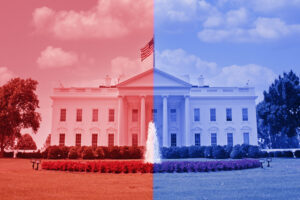
Bread at the Schnuck’s grocery story in Columbia marked as permitted to be purchased through Missouri’s WIC program, which provides supplemental foods, nutrition education and referrals to health care, at no cost, to low-income pregnant, breastfeeding and postpartum women, infants, and children up to age 5 who are determined to be at nutritional risk (Jason Hancock/Missouri Independent).
The Food and Drug Administration really wants you to believe that healthy is as healthy does. To that end, the FDA wants grocery shoppers to know with some degree of confidence that when they buy processed foods emblazoned with a “healthy” label, by golly, it’s healthy eating. Pinky swear.
But as it turns out, trying to determine just what foods are truly healthy and those that are healthy wannabes is a lot tougher than it looks.
In 1990, Congress passed the Nutrition Labeling and Education Act, which directed the FDA to fix what was a relatively hodgepodge U.S. food labeling system. Between 1990 and 1994, FDA established new guidelines including a nutrition facts label for all packaged foods.
In 1994, FDA added guidelines food producers needed to meet in order to use “healthy” on packaging, including limits for total fat, saturated fat, cholesterol and sodium. Foods also were required to provide at least 10 percent of the daily value of at least one nutrient – fiber, protein, iron, calcium, vitamin C, or vitamin A. The guideline was moot on added sugars.
Looking through today’s lens, the 1994 guideline was a disaster. Obviously non-healthy foods like sweetened yogurt, white bread, fat-free pudding, and sugary cereals qualified for a healthy label simply because they were low in fat.
And processed foods high in healthy nuts or avocado oil? Nope. In 2015, the FDA sent a letter to the Kind Snacks food company demanding they drop healthy claims from a number of energy bar labels found to exceed 1 gram of saturated fat. Specifically, the FDA demanded Kind remove labels claiming “antioxidant rich,” “good source of fiber,” or “no trans fats.”
Kind fought back with a petition drive to change how FDA defined healthy. That got the FDA’s attention. In 2016, FDA issued a proposed rule change, had some hearings … and then the issue fizzled.
Until now. Last month, the FDA woke up from its six-year slumber to announce new labeling guidelines defining healthy. Now posted on the Federal Register, the proposed rule would require packaged/processed foods labeled as “healthy” to:
· Contain minimum amounts of food from one or more of the food groups or subgroups recommended by the Dietary Guidelines, like fruits, vegetables or dairy.
· Follow specific updated limits for certain nutrients, like saturated fat, sodium and a new standard for added sugars.
FDA also is developing a symbol that food manufactures can place on qualified healthy food products.
Generally nutritionists have reacted favorably to the new proposed FDA rule. And yes, it is a whole lot better than the 1994 standard. But will it work? Will it get more people grabbing “healthy” foods off the grocery shelves? To say unquestionably yes I’m afraid requires a leap of faith.
First off, compliance with the proposed rule is voluntary. Food producers may decide not to label their FDA approved healthy foods. And shoppers are almost certain to wrongly believe that any foods without a “healthy” label are unhealthy. (Let the lawsuits begin).
Moreover, defining healthy is not one size fits all. What is healthy to a world-class professional soccer player is going to be entirely different from someone dealing with type 2 diabetes.
And the term “healthy” is subjective. Put 10 people in a room and ask them to define “healthy foods.” Some might say it’s something without chemicals or preservatives. Others might say natural or organic food. Still others might have another interpretation.
Expect otherwise FDA-approved “healthy” products still to be loaded with additives. Yikes.
It’s not far-fetched to think the FDA — which says about 5% of all packaged foods are currently labeled “healthy” — really has its work cut out for it.
Truth be told, the FDA would have a better chance of meeting a healthy is as healthy does standard if it could get the public to buy more unprocessed foods like fruit, vegetables, fish, dairy, eggs, grains, and nuts.
If the FDA wanted to truly get serious about changing what Americans eat it could go ballistic and consider warning labels like those used in Brazil to discourage shoppers from buying junk food. Needless to say, U.S. food companies would do anything to prevent the FDA from going down that road.
The FDA is taking public comment till Dec. 28. It will be interesting to see what processed food makers will have to say. Nonetheless, color me skeptical that the proposed rule will have much of an impact on American eating habits.
This commentary was originally published by Investigate Midwest, an independent, nonprofit newsroom. Its mission is to serve the public interest by exposing dangerous and costly practices of influential agricultural corporations and institutions through in-depth and data-driven investigative journalism. Visit online at www.investigatemidwest.org.
Our stories may be republished online or in print under Creative Commons license CC BY-NC-ND 4.0. We ask that you edit only for style or to shorten, provide proper attribution and link to our website. AP and Getty images may not be republished. Please see our republishing guidelines for use of any other photos and graphics.





Dave Dickey